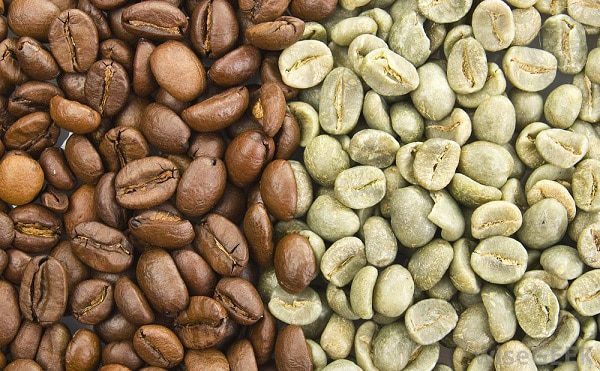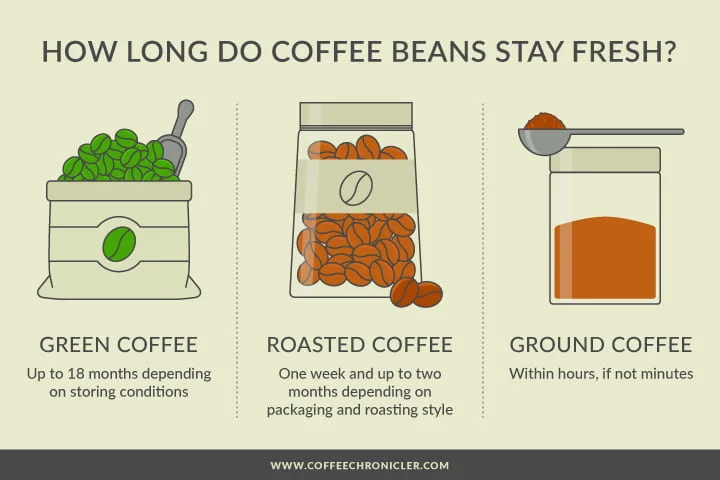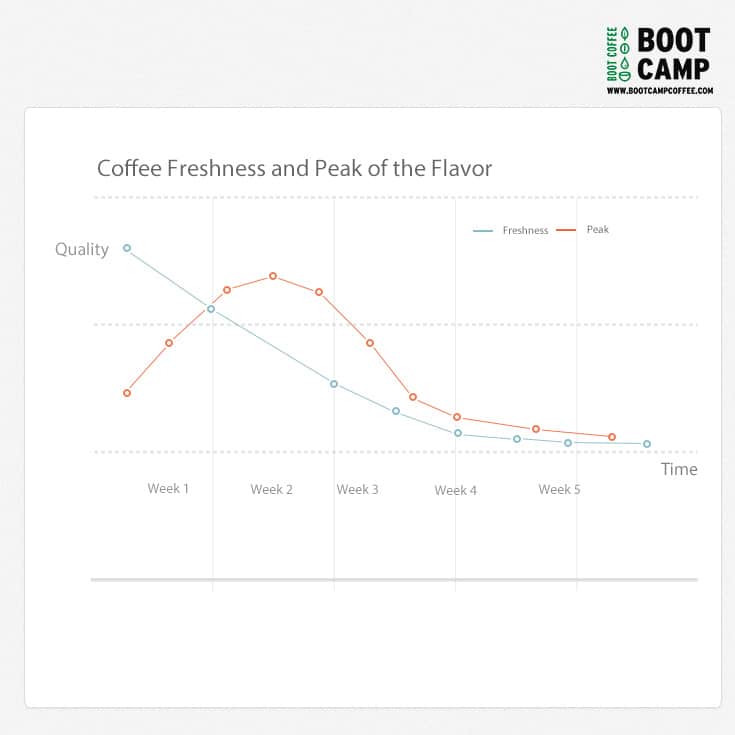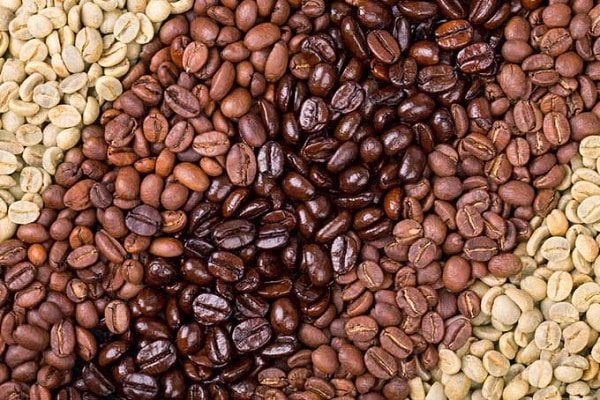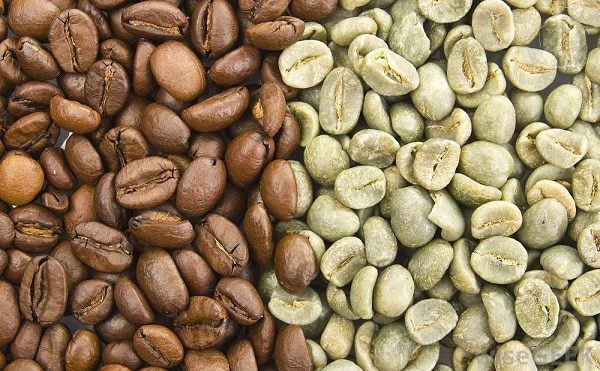The beans ‘ freshness is crucial when brewing the perfect cup of coffee.
But how can you be sure that your coffee beans are as fresh as they claim to be?
This article will guide you through some simple yet effective methods to determine the freshness of your coffee beans.
From checking the roast date to evaluating the aroma and appearance, you’ll soon be armed with the knowledge to ensure your morning brew is always at its flavorful best.
So grab your favorite mug and explore the fascinating world of coffee bean freshness together.
Appearance
Color
When determining the freshness of coffee beans, one crucial factor to consider is their appearance, precisely their color. Freshly roasted coffee beans typically have a rich, deep brown color. However, this can vary depending on the roast level.
Lighter roasts will have a lighter brown color, while darker roasts may appear almost black. It’s important to note that the color of beans does not necessarily indicate freshness, but it can give you a general idea of the roast level.
Texture
Another aspect of coffee bean appearance to consider is the texture. Freshly roasted coffee beans should have a smooth and consistent texture.
They should not be overly oily or have any visible cracks or blemishes. Beans that have an oily sheen or a rough texture could indicate that they have been sitting around for a while or that they have been over-roasted. It’s best to choose beans that have a clean and uniform texture.
Presence of oil
While the presence of oil on coffee beans is not necessarily a sign of freshness, it can provide some insight into the beans’ age. When freshly roasted coffee beans, they should not have enough oil on their surface.
However, as time passes, the oils in the beans will start to migrate to the surface, resulting in a shiny appearance. This process is known as “sweating” and is a natural occurrence. If you come across oily beans, it’s a good indication that they have been sitting around for a while and may have lost some of their freshness.
Aroma
Intensity
The aroma of coffee is an integral part of the overall coffee experience. When assessing the freshness of coffee beans, the intensity of the aroma is a crucial factor to consider. Freshly roasted coffee beans should have a strong and vibrant aroma.
When you open a bag of freshly roasted beans, you should be greeted with a powerful and enticing scent. If the aroma is weak or dull, it could indicate that the beans have been sitting too long and have lost some freshness.
Fragrance Notes
In addition to assessing the intensity of the aroma, it’s also essential to pay attention to the specific fragrance notes present in the coffee beans.
Different coffee varieties and roasting profiles can produce a wide range of fragrance notes, including floral, fruity, nutty, chocolatey, and earthy aromas. When freshly roasted beans, these fragrance notes should be distinct and well-defined.
However, these fragrance notes can fade or become messy as the beans age. To determine the beans’ freshness, take a moment to inhale deeply and see if you can detect the specific fragrance notes mentioned in the coffee’s description.
Staleness
Determining the freshness of coffee beans can also be done by assessing any signs of staleness in their aroma. Stale coffee beans often have a flat and cardboard-like smell.
They may lack any complexity or depth, and the aroma might even be slightly musty. If you notice any of these signs, the beans are past their prime and may not deliver the best flavor or quality in your brewed coffee.
Roasting Date
Importance of Roasting Date
One of the most critical factors in determining the freshness of coffee beans is the roasting date. Coffee beans are at their peak flavor in the days and weeks following the roasting process.
As time progresses, the beans start to lose their freshness and degas, which can lead to a decline in flavor and quality. Therefore, knowing the roasting date is crucial to enjoying the best possible cup of coffee.
Checking for the Date
When purchasing coffee beans, checking for the roasting date is essential. Many specialty coffee brands and local roasters include this information on their packaging. Look for a clearly labeled date that indicates when the beans were roasted.
Ideally, you want to find beans that have been roasted within the past few days or, at most, within a couple of weeks. Avoid purchasing beans with no roasting date or beans sitting on the shelf for an extended period.
Optimal Period After Roasting
While the freshness of coffee beans can vary depending on the roast and personal preferences, coffee experts generally recommend consuming the beans within one to four weeks after the roasting date.
This is when the beans are considered to be at their peak flavor and aroma. However, some coffee enthusiasts may argue that waiting a few days after the roast allows the beans to undergo a short resting period and reach their full potential. Ultimately, the optimal period after roasting can vary, so it’s worth experimenting to find your preferred window of peak freshness.
Packaging
Sealed vs. Unsealed
The packaging of coffee beans plays a significant role in preserving their freshness. Coffee beans should be packaged in airtight containers or bags to prevent air, moisture, and light exposure.
When exposed to these elements, three coffee beans can quickly lose their freshness, resulting in a dull and lackluster cup. Opt for beans that come in sealed packaging, as this helps maintain their flavor and aroma for a more extended period.
Valve Presence
Another feature to look for in coffee bean packaging is the presence of a degassing valve. These little one-way valves are designed to release the carbon dioxide (CO2) that coffee beans emit after roasting.
The valve allows the gas to escape without letting oxygen in. It’s essential because oxygen can significantly impact the beans’ freshness and cause them to become stale quickly. The presence of a degassing valve is an indication that the coffee beans were packaged with freshness in mind.
Package Transparency
While not directly related to freshness, coffee bean packaging with a transparent window can provide helpful information. Seeing the beans inside the package allows you to visually assess their color, texture, and overall appearance before purchasing.
This visual inspection can give you a good idea of the beans’ freshness and quality, helping you make an informed decision.
Bean Quality
Origin and Sourcing
When evaluating the freshness of coffee beans, it’s essential to consider their quality and origin. Coffee beans sourced from reputable and sustainable farms are more likely to be fresh and of higher quality.
Different coffee origins and growing regions have distinct flavor profiles, and knowing where your beans come from can give you insights into what to expect regarding freshness and taste. Look for brands prioritizing direct trade or fair trade relationships with farmers to ensure you get the best quality beans.
Certifications
Another aspect of bean quality to consider is certifications. Various certifications, such as organic or Rainforest Alliance, indicate that the coffee beans have been produced following specific standards and practices.
While certifications do not directly determine the beans’ freshness, they can provide some assurance of their overall quality and the sustainable practices employed in their cultivation and processing.
Bean Defects
The presence of bean defects can indicate poor freshness or improper processing. When examining coffee beans, look for any visible defects, such as broken or discolored beans, insect damage, or moldy beans.
These defects can significantly impact the taste and overall quality of the coffee. Fresh and well-processed beans should have minimal defects if any at all. Choosing beans with low defect rates ensures that you’re starting with the highest quality product and increasing the chances of a fresh and flavorful cup of coffee.
Grind
Grinding Coffee
They are grinding coffee just before brewing is a crucial step in maintaining freshness. Whole coffee beans have minimal surface area exposed to air, which helps preserve their flavors and aromas.
However, once the beans are ground, they become susceptible to oxidation and rapid flavor deterioration. You ensure you maximize each cup’s freshness by grinding coffee beans just before use.
Effects of Grind on Freshness
The coffee grind size can also impact your brew’s freshness. Different brewing methods require different grind sizes; consistency is vital in adequately extracting flavors. If the grind size is too fine, it can lead to over-extraction, resulting in a bitter and unpleasant taste.
On the other hand, under-extraction can occur if the grind size is too coarse, leading to a weak and lacking flavor. Generally, a consistent and appropriate grind size for your chosen brewing method will help maximize freshness and ensure a delicious cup of coffee.
Determining Ideal Grind
Determining the ideal grind size for your brewing method can take some experimentation. Factors such as the type of brewer, the length of brewing time, and personal taste preferences all come into play.
It’s worth consulting brewing guides or speaking with coffee professionals to determine the ideal grind size for your favorite coffee brewing method. You can enhance your brewed coffee’s freshness and overall flavor by getting the grind right.
Brew
Correlation between Brew and Freshness
The brewing process plays a significant role in bringing out the freshness and flavors of coffee beans.
Regardless of how fresh the coffee beans are, if the brewing process is not executed correctly, the resulting cup of coffee may not showcase its optimal flavors. It’s essential to follow proper brewing techniques and parameters to maximize the freshness in your cup.
Taste Evaluation
Taste evaluation is an excellent way to determine the freshness of coffee beans through the brewed cup. When assessing the freshness of your brewed coffee, pay attention to the flavors present.
Freshly roasted and adequately brewed coffee should have a well-rounded and balanced flavor profile. Look for vibrant and distinct flavors representing the beans’ origin and tasting notes. If the flavors are flat, muted, or stale, it could indicate that the beans have lost some of their freshness.
Extracting Flavors
Focusing on proper extraction during brewing is essential to ensure the freshest and most flavorful cup of coffee. Extraction refers to dissolving the desirable compounds and flavors from the coffee beans into the brewed liquid.
It’s essential to achieve the right balance of extraction to bring out the flavors without over or under-extracting. This can be achieved by controlling water temperature, brew time, and coffee-to-water ratio.
By optimizing the extraction process, you can maximize your coffee beans’ freshness and flavor potential.
Storage
Keeping Beans in Whole Form
To maintain the freshness of coffee beans, it’s best to store them in their whole-bean form rather than pre-ground. Whole beans have a significantly longer shelf life than ground coffee due to the reduced surface area exposed to oxygen.
Grinding coffee accelerates the staling process, so grinding only what you need for each brewing session is advisable. By storing coffee beans as whole beans, you can preserve their flavors and aromas for extended periods.
Proper Storage Containers
Choosing the correct storage container for your coffee beans is crucial in preserving their freshness. Airtight containers made of glass or ceramic materials are excellent coffee storage choices. These containers help prevent exposure to air, moisture, and light, which can all degrade the quality and freshness of the beans.
Avoid using transparent plastic containers, as they allow light to penetrate and impact the coffee’s flavors. Additionally, make sure the storage container is clean and free from any lingering odors that could influence the taste of the coffee.
Avoiding Moisture and Light
It’s essential to keep coffee beans away from moisture and light when storing them. Moisture can lead to the growth of mold and spoilage, while light can degrade the coffee’s flavors and accelerate the staling process.
Store your coffee beans in a cool, dry place, away from direct sunlight or exposure to heat sources. Avoid storing them near the stove, oven, or any other appliance that generates heat. By protecting the beans from moisture and light, you can help maintain their freshness and ensure a better-tasting cup of coffee.
Cupping
Purpose of Cupping
Cupping is a sensory evaluation process commonly used by coffee professionals to assess coffee beans’ flavors, aromas, and overall quality. It is also an excellent method for determining the freshness of coffee beans.
Following specific cupping procedures, you can analyze the brewed coffee’s taste, aroma, and visual aspects to determine its freshness and quality.
Steps in the Cupping Process
To cup coffee, you will need freshly roasted and ground coffee beans, hot water, cupping bowls or cups, a cupping spoon, and a cupping scorecard. The first step is to evaluate the fragrance of the dry coffee grounds before adding hot water.
Then, hot water is added, and the coffee is allowed to brew for a specific time. After brewing, a crust forms on the surface, broken to release the aroma. A spoonful of the brewed coffee is slurped from each cup, allowing the taster to evaluate the flavors and overall quality.
The cupping scorecard records observations and rates various attributes of the coffee. By following this process, you can gain insights into the freshness and quality of the coffee beans.
Identifying Freshness through Cupping
Freshness can be identified through the brewed coffee’s fragrance, aroma, and flavor during the cupping process. Freshly roasted, high-quality coffee beans typically exhibit vibrant, well-defined flavors and aromas.
You may notice bright acidity, distinct fragrance notes, and a clean, full-bodied taste. On the other hand, stale or poorly processed beans may produce flat and muted flavors, lack complexity, or exhibit off-flavors.
Cupping provides an excellent opportunity to evaluate coffee beans’ freshness and overall quality in a controlled setting.
Expert Opinion
Consulting Coffee Professionals
For a deeper understanding of coffee freshness, it can be beneficial to consult with coffee professionals. Local coffee roasters, baristas, or coffee shop owners are often passionate about their craft and can provide valuable insights into assessing the freshness of coffee beans.
They can recommend selecting the right beans, proper storage techniques, and brewing methods that maximize freshness. Don’t hesitate to reach out and ask questions – their expertise can help you navigate the vast and exciting world of coffee.
Joining Coffee Communities
They are joining online or in-person coffee communities, another excellent way to gain knowledge and expertise on coffee freshness. Coffee enthusiasts and professionals often gather in forums, social media groups, or local meet-ups to share their experiences, discuss brewing techniques, and exchange recommendations.
This sense of community can be constructive in expanding your understanding of coffee freshness and connecting with like-minded individuals who share your passion.
Educational Resources
Numerous educational resources are available that delve into the topic of coffee freshness. Books, podcasts, online courses, and articles provide in-depth information on various aspects of coffee, including freshness.
These resources offer insights into the science behind freshness, detailed brewing techniques, and the importance of quality beans.
By exploring these educational resources, you can enhance your knowledge and become more confident in determining the freshness of coffee beans.
In conclusion, determining the freshness of coffee beans involves evaluating various factors such as appearance, aroma, roasting date, packaging, bean quality, grind, brew, storage, cupping, and seeking expert opinions.
By paying attention to these elements and utilizing the knowledge and resources available, you can ensure that every cup of coffee you brew is a fresh and flavorful experience.
Enjoy the journey of discovering the world of coffee freshness and its endless possibilities in pursuing the perfect cup!


